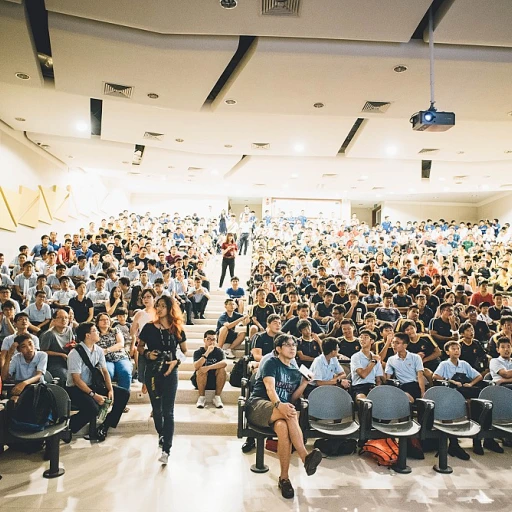Understanding the Importance of 1:1 Meetings
The Significance of Regular One-on-One Meetings
Understanding the role of meetings—specifically one-on-one meetings—is critical for fostering a productive work environment and ensuring work-life balance. These meetings provide a dedicated space for managers and employees to discuss feedback, set goals, and address any roadblocks that may hinder professional growth. They serve as a key avenue for strengthening the manager-employee relationship by establishing trust and open communication. The benefits extend beyond daily operations. In these engagements, direct reports have the opportunity to voice concerns and aspirations directly, while managers can perform vital check-ins to assess how employees are managing responsibilities. This interpersonal exchange is fundamental to identifying areas in need of support and guidance, ultimately enhancing career development and performance. Moreover, a well-structured meeting can enhance time management. With a consistent agenda template, both parties can maximize the time spent, minimizing disruption to both work and personal life. By allocating specific sessions for career goals, professional development, and necessary feedback, one-on-one meetings cultivate a balanced approach to work routines and life outside the office.Key Elements of an Effective 1:1 Meeting Template
Essential Components of a Successful Meeting Framework
Crafting an effective 1:1 meeting template requires thoughtful consideration of several key elements. These components ensure that both managers and employees can engage in meaningful discussions, fostering professional development and enhancing work-life balance.
Clear Meeting Agenda
Every productive session begins with a well-structured meeting agenda. This template should outline the discussion points, facilitating a straightforward flow of topics. An effective agenda includes items relevant to the direct report's role, career development, and any ongoing projects. It ensures no time is wasted and keeps both parties focused.
Time Allocation and Frequency
Setting a consistent time each week for these meetings is crucial. It allows managers and employees to prepare adequately, making each encounter more valuable. The duration should be sufficient to cover all agenda items without feeling rushed. A template can also reflect the flexibility needed to adapt based on individual work schedules.
Active Feedback and Performance Discussions
The opportunity to provide and receive feedback is vital. This involves discussing achievements, potential areas for improvement, and setting realistic, long-term career goals. Through regular check-ins, direct reports gain insights into their performance and actionable items for development.
Goal Setting and Action Items
One of the primary objectives of these meetings is to establish clear, attainable goals. Incorporating goal-setting components into the meeting template helps to align individual career aspirations with team objectives. Following each session, document action items in the meeting notes to track progress over time.
Fostering Open Communication
A successful template also encourages open communication between manager and employee. This atmosphere of trust allows employees to voice concerns that may affect their work-life balance. Addressing these issues promptly helps in stress management, ultimately boosting team performance.
Customizing Your 1:1 Meeting Template for Personal Needs
Tailoring the Meeting Framework for Individual Needs
Developing a 1:1 meeting template is a strong foundational step towards enhancing work-life balance, but tailoring it to individual needs can make it even more effective. Customizing the meeting structure ensures that both employees and managers can address specific concerns, set personal goals, and track progress in alignment with their unique roles and responsibilities. Start by considering the time allocation for these meetings. Although regular weekly check-ins may serve most teams well, some might benefit from bi-weekly or monthly cadence depending on the team dynamic and workload demands. Flexibility in scheduling allows team members to prepare adequately, which can enhance the quality of the feedback exchanged. When customizing the agenda, focus on individual career goals, development areas, and performance metrics specific to each direct report. Include sections that cater to long-term objectives, allowing employees to align their day-to-day tasks with broader career development plans. Templates offering prompts related to career development, such as "What skills are you interested in developing?" or "How can we help you pursue your professional interests?" can guide meaningful conversations. Emphasizing open-ended questions within the agenda template enhances engagement and encourages honest dialogue. Questions like "What barriers are hindering your work-life balance?" or "How can management support your professional development?" provide a platform for constructive feedback that can inform ongoing improvements to the work environment. It's also beneficial to reserve time for discussing action items from the previous meeting, ensuring a loop of accountability. Tracking progress on these items can help managers support their team's continuous growth, aligning individual achievements with organizational goals. An appropriately customized 1:1 meeting template not only fosters clearer communication but also supports employee well-being by addressing the unique preferences and professional aspirations of each individual. Implementing effective meeting templates tailored to each team member contributes significantly to nurturing a balanced work-life culture. For more insights on enhancing productivity while maintaining a healthy work-life balance, feel free to visit this resourceful page.The Role of 1:1 Meetings in Stress Management
The Stress-Relief Function of One-on-One Meetings
One-on-one conversations between managers and employees are crucial for stress management, serving as an open platform for feedback and discussion. These meetings help in setting clear goals and expectations, thereby reducing workplace anxiety. Employees often face stress due to unclear directives or goals, and a structured meeting template can mitigate such issues by fostering open communication channels. Establishing a consistent agenda template for these sessions plays a significant role in managing stress levels. Topics such as career development, professional growth, and performance feedback should feature prominently in these meetings. The opportunity for employees to voice concerns and managers to provide clarity contributes significantly to a supportive work environment. Moreover, meeting templates designed to facilitate direct reports can concentrate efforts on addressing individual concerns, action items, and goal setting. This approach can reduce the pressure associated with long-term planning and performance reviews. Regular check-ins and communication, when well-structured, help alleviate stress by providing continuous support and constructive criticism. The use of templates encourages a focus on predefined meeting agendas, allowing both employees and managers to prepare adequately, which eliminates the stress of last-minute changes. Consistency in these meetings ensures team members can anticipate when feedback will be delivered, fostering a sense of stability and reducing anxiety about unexpected performance evaluations. In conclusion, one-on-one meetings, when executed effectively, play a critical role in managing workplace stress, ultimately contributing positively to work-life balance.Leveraging Technology to Enhance 1:1 Meetings
Enhancing 1:1 Meetings with Technology
In the modern workplace, technology plays a pivotal role in streamlining processes, and 1:1 meetings are no exception. Leveraging the right tools can significantly enhance the efficiency and effectiveness of these meetings, ensuring both managers and employees benefit from the interaction.
Here are some ways technology can help:
- Scheduling Tools: Use scheduling apps to set up regular check-ins and avoid conflicts. This ensures that meetings occur consistently, fostering better communication between managers and their direct reports.
- Meeting Templates: Digital templates can be customized to fit the unique needs of each team. These templates help maintain a structured meeting agenda, ensuring all important topics, such as career development and performance feedback, are covered.
- Note-Taking Applications: Utilize apps that allow for easy note-taking during meetings. This helps in documenting action items and tracking progress on long-term goals, making it easier for both parties to follow up on previous discussions.
- Goal-Setting Software: Implement software that assists in setting and tracking career goals. This can help managers and employees align on objectives and measure progress over time, ensuring that meetings are not just about immediate concerns but also focus on professional development.
- Feedback Platforms: Use platforms that facilitate continuous feedback. These tools can be integrated into the meeting process, allowing for real-time feedback and adjustments to be made, enhancing the overall performance of the team.
By incorporating these technological solutions, managers and employees can make the most out of their 1:1 meetings. This approach not only saves time but also enhances the quality of the interactions, ultimately contributing to a healthier work-life balance for all team members.
Measuring the Impact of 1:1 Meetings on Work-Life Balance
Assessing the Benefits: Evaluating 1:1 Meeting Impact
To measure the effectiveness of 1:1 meetings on work-life balance, it’s crucial to evaluate how these sessions influence overall work dynamics. Consistent one-on-one meetings can foster a healthier balance by addressing specific needs and identifying areas for improvement. Here are several key ways to gauge their impact:- Feedback loops: Regular feedback between managers and employees helps ascertain whether meetings are making a meaningful difference. Post-meeting feedback can reveal insights into how the meeting agenda aligns with employee needs and expectations, encouraging continuous improvement.
- Performance metrics: Assess key performance indicators (KPIs) before and after implementing a 1:1 meeting template. Tracking metrics such as goal completion, employee engagement levels, and productivity can indicate the positive influence of these meetings.
- Employee satisfaction surveys: Conduct surveys focusing on work-life balance, job satisfaction, and individual career development. Responses can highlight how 1:1 meetings contribute to a supportive and effective working environment.
- Action item reviews: Monitor progress through regular check-ins on agreed-upon action items. These reviews help in understanding the level of accountability and follow-through enabled by these discussions.
- Manager-employee relationship: Analyze changes in the strength of the relationship between managers and their direct reports. Stronger relationships generally lead to more open communication and collaboration, significantly boosting work-life balance.












